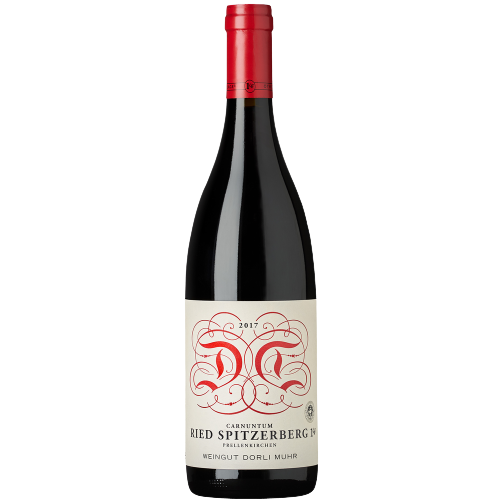Ried Spitzerberg Erste Lage 2018
Beskrivelse & specifikationer
Beskrivelse & specifikationer
Site & soil
Blaufränkisch grapes from the oldest vineyards are selected for the estate’s top wine: a parcel in Ried Spitzer planted in 1955, a parcel in Ried Roterd (planted in 1985) and a parcel in Panhölzern (1985). Each year, these old vines produce the most elegant & refined wines, with fresh acidity, precise aromas and great potential for aging.
Harvest & vinification
The clusters are harvested by hand, and any overripe berry is painstakingly removed. In the cellar, the grapes are lightly crushed and macerated partly with the stems in open fermentation vats. This extraction is very gentle and occurs completely without pumping. Clusters from Ried Roterd are trodden by foot every year. Fermentation begins after a few days thanks to the wild yeasts. This spontaneous fermentation proceeds very slowly and at room temperature; the must is neither heated nor cooled. This guarantees wines that are very precise and very aromatic. After some twenty days, the wine is pressed and then matured in 1000-litre wooden casks; no new wood is utilized, in order to avoid masking the pristine fruit of the Blaufränkisch. During the approximately twenty months of maturation, the wine is racked only once and ultimately bottled without filtration. Production is 1.700 bottles.
Vintage 2018
2018 was a year of extremes: very fast flowering, then a cooler period with some rains until end of June. Followed by a very dry and very hot summer. We had to cut off grapes from young vines to prevent them from dying. The old vines with their deep roots, though, were less impressed by the heat. Begin of September, just before harvest, we had big rains which – in the end – were beneficial, as they reduced the stress and helped to soften the tannins. The result is a beautiful complex and dense wine yet refreshing and light footed.
Land: Østrig
Region: Carnuntum
Appellation: Spitzerberg
Druesort: 100% Blaufränkisch
Alkohol: 13,5%
Vintype: Rødvin
Indhold: 75 cl.
Spitzerberg
One can perhaps picture the Spitzerberg as a reef, with the primeval ocean breaking upon its rocks for millions of years. Because of this, the Spitzerberg is covered with a thick layer of limestone, which comes from the ‘middle ages’ of geology. The sandy ground retains little in the way of water, and the mount – some 300 meters in elevation – always lies open to strong winds and high temperatures; there is no mistaking the expressive nature of grapes grown on the Spitzerberg. The extreme conditions yield marvelously aromatic wines with complexity and depth, finely woven filigreed texture and a refreshing framework of acidity.

The Spitzerberg is an approximately 5km-long & 300-metre-high limestone bar in easternmost Carnuntum. It is situated, extremely exposed to the wind, between the Alps (Leitha Range) and the Carpathians (Hainburg Hills). Thanks to the constantly breaking surf of the primeval sea that once covered the area, a thick layer of limestone was deposited on the hillside, which eroded over time to the size of grains of sand. Rainfall on the Spitzerberg amounts to only about 400mm per year, and the summer temperatures often reach 35–40°C. The sandy limestone soil can only store precious little water. This leads to very low yields at harvest, a maximum of 3000kg of grapes per hectare.




